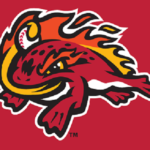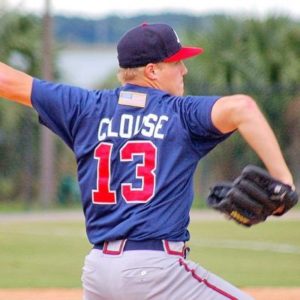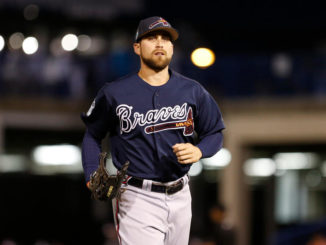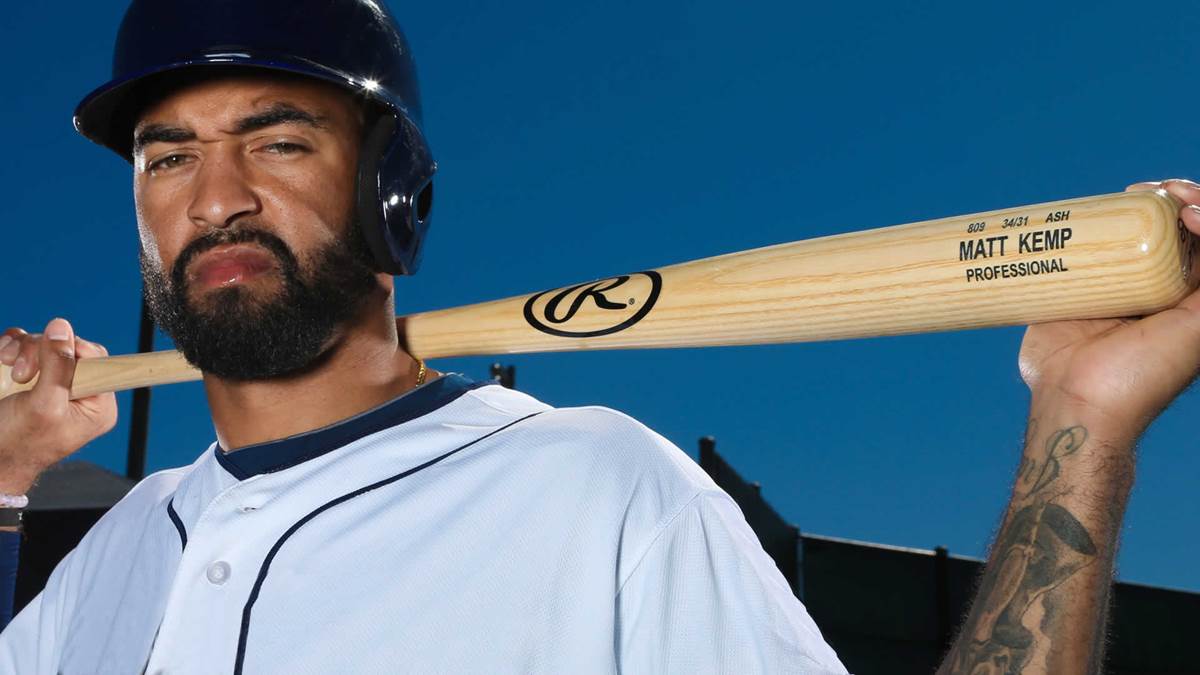
The mid-level minor league affiliates are awash in relievers taken in the middle to late rounds of the 2015 and 2016 drafts as the Braves have done a really nice job scouring smaller colleges to fill out their minor league bullpens with intriguing arms. While there will be the usual amount of minor league free agents and organizational filler, the top spots in class AA Mississippi and class A+ Florida will be filled with pitchers with a decent shot at making the major leagues, a situation that is a near complete turnaround from prior seasons.
 MISSISSIPPI BRAVES (CLASS AA)
MISSISSIPPI BRAVES (CLASS AA)
HIGH-LEVERAGE RELIEVERS
Evan Phillips, RHP
A 17th-round draft pick in 2015, Phillips has had a rapid rise through the organization, splitting time last season between the high-A and AA levels. He is primarily a fastball/slider pitcher that does a good job of mixing and giving different looks. Phillips can get into some trouble overthrowing, causing him to lose his command. This happened more as the season progressed. Phillips was part of the Braves delegation to the Arizona Fall League where he pitched to a 4.22 ERA in 10.2 innings pitched.
Kyle Kinman, LHP
Kinman has flown up the organizational ladder since being drafted in the 25th round of the 2014 draft, and even got some attention in spring training last season. The flight crashed mid-year as Kinman dealt with a series of injuries, finally shutting down for good after a June 6 outing. Kinman is the rare average-height and build reliever in the Braves system at a Billy Wagneresque 5′-11″, 180 pounds and fires a four-seam fastball that sits around 93 mph and a slider with a strong horizontal break. He comes out of a quick delivery and a low release point that is particularly deceptive against lefty hitters, who Kinman has eaten up through is minor league career. Hopefully Kinman’s injuries are behind him and he resumes his flight this season.
Chad Sobotka, RHP
Kinman’s funhouse opposite is the 6′-7″, 200 pound right-hander Sobotka. His pro career has also been the opposite of Kinman’s. Though drafted in 2014, he didn’t make his pro debut until 2015 due to an injury. He missed large chunks of 2015 and 2016 to various injuries, but caught his stride mid-season and zoomed up to Mississippi by the end of the year and pitching well for Mississippi in the playoffs. When healthy, Sobotka uses his height and delivery to get good sink on his two-seam fastball and excellent vertical and horizontal movement on his slider. He also has a harder but straighter four-seamer. Sobotka looked late last season like a guy close to a break-though, though his injury history is definitely something to keep in mind.
LOW-LEVERAGE RELIEVERS
Sean McLaughlin, RHP (Promotion)
A Johns Creek, Georgia native and former University of Georgia stand-out, McLaughlin was high-A Carolina’s most consistent reliever in 2016, pitching to a 3.08 ERA over 61.1 innings. McLaughlin is another rare shorter reliever, measuring at 5′-11″ and around 195 pounds, and he pitches with a low 3/4 delivery and a high kick that allows him to hide the ball with his knee, one of the more unique deliveries I’ve seen. The deception helps his four-seam fastball that sits in the low ’90s and a curve ball with better-than-average horizontal movement.
Taylor Lewis, RHP
Lewis made stops at three levels in 2016 after getting drafted in the 9th round of the 2015 draft out of the University of Florida. The Statesboro native pitched to a 3.00 ERA for the season, finishing with a 2.08 ERA in 19 regular season games with Mississippi and 3.2 scoreless frames in the playoffs. Lewis has fairly sharp command, especially for a guy who pitches out of a low armslot. His fastball sits in the low ’90s, but he locates it well, and he has a solid slider that he uses as his strikeout pitch, but mostly he tries to induce weak contact.
Phil Pfeifer, LHP
Pfeifer was acquired along with righty Caleb Dirks in the Bud Norris trade with the Dodgers. A 3rd-round pick in 2015 out of Vanderbilt University, Pfeifer is 6′ even and 190 pounds and comes at the hitter with a high kick and low 3/4 arm slot that helps mask a fastball that sits around 92 mph and a tight slider that has a tight enough break to be effective against both lefties and righties. Pfeifer also mixes in a four-seamer and a change-up, giving him a lot of different looks. Pfeifer’s control seemed to slip as the season wore own, perhaps owing to fatigue as he finished out his first full pro season.
LONG RELIEVER
Wes Parsons, RHP
I wrote about Parsons in Braves System Depth: Starting Pitching, Part 2. Parsons could be a member of the rotation, but I think he starts here as he started last season, as a long reliever.
OTHER BULLPEN CANDIDATES
Adam Kolarek, LHP
A minor league free agent signing, former Mets and Rays farmhand Kolarek could break camp anywhere from AA up to Atlanta. Kolarek had a solid season in 2016 pitching in the upper minors for Tampa, and was exceptionally good against lefties who only hit .143/.282/.186 against him. Kolarek got a major league spring training invite so he’ll have the eyes of the major league staff.
Carlos Salazar, RHP (Promotion)
A 2014 draft pick out of high school, Salazar pitched all of 2016 in high-A Carolina to mixed success. For the first three months of the season, Salazar pitched to a 2.86 ERA in 28.1 innings, striking out 33 batters. From July through September, Salazar had a 5.56 ERA despite striking out batters at a higher rate and walking them at a lower rate. Short sample sizes can make or break relievers. Salazar is a stocky right-hander with a fastball that sits mid-90s and can creep up to 97-98 on a good day. He compliments it with a curveball and a change, but he’s primarily trying to get guys out with the fastball. Harnessing his control continues to be his major hurdle. It may be a coin flip if he stays in high-A or gets promoted to Mississippi; I think he gets promoted, though the organization may want him to work more with pitching coach Dennis Lewallyn, who will be with the Fire Frogs this season.
Isaac Sanchez, RHP
Sanchez pitched last season in the Mariners organization and acquitted himself well in the hitter’s paradise of Bakersfield. The 24-year-old has a three-pitch mix with a low-90s fastball, a change-up that he can command to all corners, and a curveball that he can spin a different rates to give different looks.
Andres Avila, RHP
Avila is a 26-year-old native of Mexico and a 7-year minor league veteran of the Oakland A’s farm system. Avila has shown good control and solid strikeout numbers over his minor league career, and pitched well in the Mexican Winter Leagues.
Michael O’Neal, RHP
O’Neal was signed as a free agent out of the independent Frontier League before last season. He bounced between class A+ Carolina and Mississippi, and mostly didn’t pitch well. He was however durable, generally filling in multiple inning stints and even a couple of spot starts.

FLORIDA FIRE FROGS (CLASS A+)
HIGH-LEVERAGE RELIEVERS
Devan Watts, RHP (Promotion)
A 17th-round pick out of Greenville, Tennessee’s Tusculum College, Watts is one of a handful of very promising high-leverage bullpen prospects from the 2016 draft. Watts has a sinker/slider mix, with the sinker sitting in the low ’90s but occasionally reaching as high as 95-96. It’s a bat-breaking pitch that gets both whiffs and groundballs. The slider is a sharp cross-fire breaker. The results were devastating to low-minors hitters and he pitched to a 0.76 regular season ERA in Danville and Rome combined, and he ended up as Rome’s closer down the stretch and into the playoffs, finishing off with 3.1 scoreless postseason innings.
Corbin Clouse, LHP (Promotion)

Another late-round gem, Clouse was a 27th-round pick by the Braves in the 2016 draft out of Davenport University in Michigan. Drafted that low and from a school not known as a hotbed of baseball activity, there was zero prospect buzz on Clouse. Clouse raised eyebrows in Danville when he pitched 6.2 innings and struck out 16 of the 22 batters he faced. In Rome Clouse continued to pitch very effectively, pitching to a 1.52 ERA in 23.2 innings over 15 appearances, continuing his impressive strikeout rate by getting 37 punch-outs. In the playoffs, Clouse didn’t allow a run in 4 appearances.
Clouse didn’t start pitching regularly until his senior year of high school, which helps explain why he didn’t show up as a potential prospect. Clouse throws four pitches, a high number for a reliever. He primarily uses a two-seam fastball that sits around 92 but can get up to 95 and has good movement. He compliments that with a sweeping slider that he can either back-door against righties or get lefties to chase. He mixes in a 4-seam fastball that has a sinking action and a tighter curveball, but these pitches are used more situationally. Clouse can get into trouble with command of the fastball, and that could be exploited as he moves up the organizational ladder.
Josh Graham, RHP (Promotion)
A 4th-round pick in the 2015 draft, Graham converted to pitching from catching in his junior season and still is a little rough around the edges as far as command goes, but he has a good fastball that sits mid-90’s and can go as high as 97-98. He backs that up with a developing change-up and combines that with a deceptive delivery that masks it well. Graham was very effective in the early going last season, but faded some down the stretch in his first full pro season. Graham is built like a catcher, standing at 6′-1″, 215 pounds and improved conditioning will help him down the road.
LOW-LEVERAGE RELIEVERS
Chase Johnson-Mullins, LHP (Promotion)
At 6′-8″ and at least 270 ponds, the Mountain That Pitches brings an indelible presence to the mound. A 2015 draft pick from Kentucky, Mullins started last season in Carolina and had mixed success. A violation of team rules caused him to be suspended for two weeks, and when he got back he found himself in Rome. Mullins pitched well with Rome down the stretch, and was a key contributor to the R-Braves’s championship run. When Mullins is on, he uses his size to help give bite to a sinking two-seamer and a good curveball.
Matt Custred, RHP (Promotion)
Custred is another big kid, 6′-6″ and 240 pounds, and he leverages that size well with a mid-90s fastball that touches 98 and a solid curveball that he get’s good spin on when he’s mechanically right. More than occasionally though he loses his landing spot and starts overthrowing, and he can have outings where he can walk the park. His results improved as the season progressed in 2016 and he pitched to a 1.32 ERA in August and September, then allowed 1 run in 3.1 innings in the playoffs for Rome, striking out 6. Custred was a 31st-round pick in the 2015 draft.
Cesilio Pimentel, LHP
Pimentel was taken in the minor league portion of the Rule V draft from the Pirates organization. A sinkler/slider pitcher without appreciable splits, the 24-year old can go multiple innings and should be a steady middle inning contributor.
LONG RELIEVER
Ryan Clark, RHP
I wrote more extensively about Clark in Braves System Depth: Starting Pitching, Part 2. Barring injury, I believe Clark will start the season in the bullpen but could back to the rotation if a spot opens up.
OTHER BULLPEN CANDIDATES
Ramon Morla, RHP
A former infield prospect, Morla switched over to pitching in the 2014 season as his bat stalled out at the AA level and promptly tore his UCL. A year after Tommy John surgery and his fastball still can climb into the upper 90’s, but his results have been inconsistent. The Braves signed him as a minor league free agent and this will be a good test for the vaunted Braves pitching development team.
Jon Kennedy, LHP
A tall lefty out of the Australian Summer Leagues, Kennedy signed as an international amateur free agent as a 20-year-old before last season and bounced between Danville and Rome. He has the look of a classic lefty reliever with a fringy low-90s fastball, a slurvy curveball that is somewhat effective against left-handed hitters, and a below-average change-up that Kennedy uses to try to give righties something else to worry about.
Ryan Lawlor, RHP
An 8th-round pick in 2015 out of the University of Georgia, Lawlor has a solid three-pitch repertoire (fastball/curveball/change-up), but was out of commission for nearly three months of the season with various injuries, a concern that followed him out of college.
David Richardson, RHP
A 17th-round pick by Baltimore in 2010, Richardson was signed to a minor league free agent deal. Richardson’s progress through the Orioles system has been slowed by a variety of injuries, but last season saw him pitch a career high 93.1 innings as a long reliever and spot starter for high-A Frederick, and he even got a mid-season taste of AA ball.
Navery Moore, RHP
A 14th-round pick by Atlanta in the 2011 draft out of Vanderbilt, Moore was released by the organization after the 2014 season but comes back for a second tour of duty after two seasons in the independent leagues. Moore is a hard thrower, with a fastball clocked in the upper-90s, but control has been a constant bug-a-boo.
Oriel Caicedo, LHP (Promotion)
Ceicedo is an organizational arm, spending six years with the Braves and last year for the first time spending the whole season at the low-A level. Caicedo is a plug-and-play pitcher, able to spot start or throw long relief. Caicedo throws strikes, almost to a fault, as he allows lots of hits and doesn’t miss too many bats. Caicedo is also limited as a lefty specialist; he has reverse platoon splits and lefties had a .848 OPS against him in 2016.
Raymar Navarro, RHP
Navarro signed as an amateur free agent out of Cuba and had a tough first season with the Braves, pitching to a 5.78 ERA in 67 innings for the high-A Mudcats. The 25-year-old pitched worse as the season wore on, and also was suspended in July for three weeks for violating team rules.
FINAL THOUGHTS: As in Atlanta and Gwinnett, relief pitching should be a strength in the middle levels of the organization as well. In particular, I like the number of quality left-handed relievers in the organization, an area that has been a historical weakness in Braves development where general managers have often had to look outside the organization for quality options at the big league level.
OFR TOP 10 RELIEF PITCHER PROSPECT RANKINGS (WITH EXPECTED LEVEL):
- A.J. Minter (AAA)
- Luke Jackson (AAA)
- Akeel Morris (AAA)
- Jacob Lindgren (MLB/DL)
- Thomas Burrows (A)
- Armando Rivero (MLB)
- Caleb Dirks (AAA)
- Corbin Clouse (A+)
- Jason Hursh (AAA)
- Devan Watts (A+)
Other entries in this series:
Catcher
First Base
Second Base
Third Base
Shortstop
Left Field
Centerfield
Right Field
Starting Pitching, Part 1 (Atlanta/Gwinnett)
Starting Pitching, Part 2 (Mississippi/Florida)
Starting Pitching, Part 3 (Rome/Danville)
Relief Pitching, Part 1 (Atlanta/Gwinnett)




Leave a Reply